“ At the place where Jesus was crucified, there was a garden, and in the garden a new tomb, in which no one had ever been laid. Because it was the Jewish day of Preparation and since the tomb was nearby, they laid Jesus there. ”
John 19:41-42
The first pilgrimages to the Holy Land took place in the early 4th century. It was a time when the Roman Emperor Constantine the Great stopped the persecution of Christians and legalized their religion. Then, he sent his mother to Palestine (today Israel). Saint Helena established the locations of Christ's tomb and Golgotha. The Roman temple that stood in that location was replaced by a church. According to the Bible (John 19:41-42), the tomb of Jesus was close to the place of the Crucifixion, so the building of the first church was planned to enclose both places.
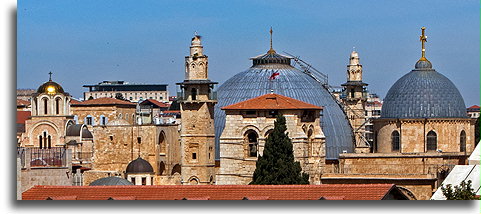
This is the only place where six Christian denominations practice their faith at the same location. Representatives of six Christian denominations, Catholics, the Armenian Church, Greek Orthodox, Syriac (Syrian) Orthodox, the Coptic Church, and the Ethiopian Church share the Church of the Holy Sepulchre in Jerusalem. Each of them controls different parts within the church. Only Muslims have the right to keep the key to the main door. In the past, they also used to mediate in disputes between various Christian communities.
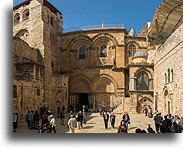
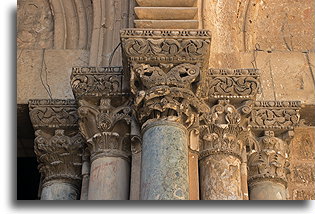
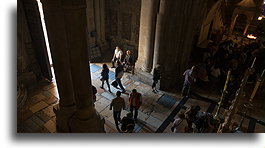
Inside the Church of the Holy Sepulchre, a small stairway leads up to Calvary (Golgotha) regarded as the site of Jesus' crucifixion. The lavishly decorated chapel shines with silver and gold. Guarded by Greek Orthodox priests the rock of Golgotha seen under the glass on both sides of the altar is the most sacred. The rock can be only touched through a hole beneath the altar.
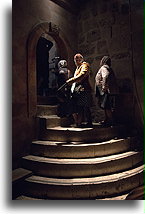
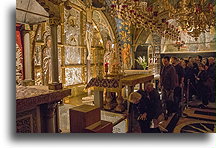
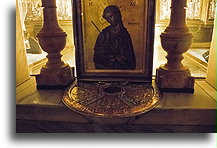
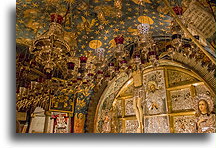
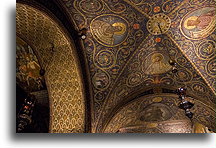
Stone of the Anointing, according to tradition, was the spot where Joseph of Arimathea and Nicodemus prepared Jesus’ body for burial. The tradition of worshiping this stone initiated from the Crusaders area. The present stone was placed here during the 1810 reconstruction. Only the Armenian, Copt, Greek Orthodox and Roman Catholics Churches have the right to contribute olive lamps hanging directly above the stone.
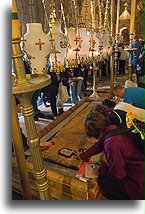
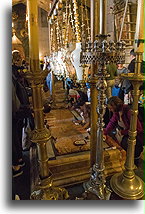
Surprisingly, the tomb of Jesus is not a grotto, but a small chapel standing inside the church building. The original cave has disappeared over the centuries due to damage and reconstruction efforts. What remains today is the believed spot of burial. The chapel from 1810 has two rooms. The first contains stone fragments, which are believed to be parts of the larger stone used to seal the tomb. The second room is a tomb itself.
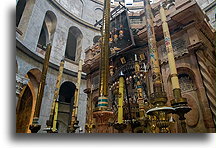
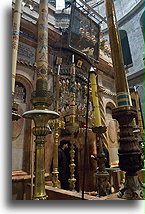
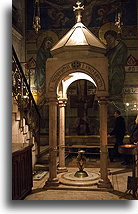
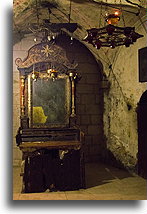
The church is controlled by different Christian denominations. Each of them owns different parts of the Holy Sepulchre. Greek Orthodox priests guard the tomb of Jesus; they also look after Golgotha. Catholics own the chapel of Francs, an adjacent to the place of Crucifixion. In the close proximity to Stone of the Anointing stands the Armenian Shrine. The Coptic Chapel located is right behind the tomb of Jesus, and nearby, damaged by fire, Jacobite Chapel belongs to the Syriac Orthodox Church.
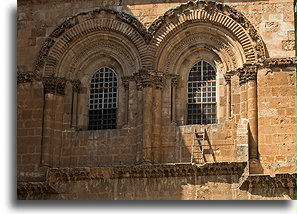
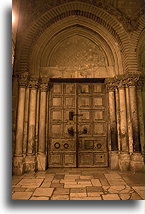
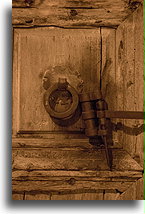
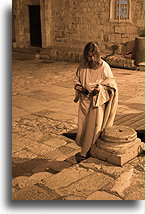
Relations between Christian groups in the church of the Holy Sepulcher regulated are by Status Quo, an understanding originating from the time of Ottoman Empire. For example, it defines the procedures of the daily opening and closing of the church door. Since only two Muslim families Nusseibeh and Judeh have the right to store the key, their representative is the person who--on a daily basis following the traditional, unchanging procedure--enters the ladder to reach the hasp and turns the key. A kind of curiosity is a ladder on the church cornice. It stands there leaning against the window from the time when the Status Quo came into force. The ladder is referred to as immovable because none of the six Christian groups may move, rearrange, or alter any property in the church without the consent of the other five groups.




